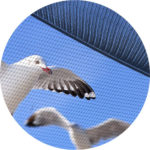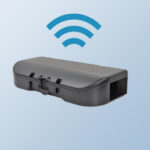Management Commitment
 In today’s fast-paced food manufacturing and distribution industries, a lot of scrutiny is placed on keeping the food supply safe. Many, if not most, distributors and manufacturers participate in third-party audit schemes, whether it be GMP, GDP, or GFSI audit schemes. None of these programs could be successful without management commitment. When senior management is committed to the goal and builds the proper culture, anything can be achieved. Management commitment goes beyond dollars and people. Having a management structure that supports a food safety management system using a systematic approach is essential. It provides the labor and financial resources to ensure the program is properly maintained, it is a proactive, not a reactive system, and one that can be counted on to keep food safe. The identification of measurable objectives is one approach. The objectives should follow the SMART goal methodology and look for continual improvement, nit just numbers on paper to satisfy an audit requirement. The objectives should have a movable target to ensure improvement. Customer complaint frequencies such as two complaints per 1 million units (cases) produced is one approach. The following year adjust the objective to 1.75 complaints per million units, and so on. Setting objectives and not monitoring or reporting the results is a bad habit observed during many audits and a habit that needs to be broken. Having senior management participate in internal audits, third-party audits, and showing a presence in the manufacturing or warehouse environment is a recipe for success, one that only improves the entire food safety culture and system.
In today’s fast-paced food manufacturing and distribution industries, a lot of scrutiny is placed on keeping the food supply safe. Many, if not most, distributors and manufacturers participate in third-party audit schemes, whether it be GMP, GDP, or GFSI audit schemes. None of these programs could be successful without management commitment. When senior management is committed to the goal and builds the proper culture, anything can be achieved. Management commitment goes beyond dollars and people. Having a management structure that supports a food safety management system using a systematic approach is essential. It provides the labor and financial resources to ensure the program is properly maintained, it is a proactive, not a reactive system, and one that can be counted on to keep food safe. The identification of measurable objectives is one approach. The objectives should follow the SMART goal methodology and look for continual improvement, nit just numbers on paper to satisfy an audit requirement. The objectives should have a movable target to ensure improvement. Customer complaint frequencies such as two complaints per 1 million units (cases) produced is one approach. The following year adjust the objective to 1.75 complaints per million units, and so on. Setting objectives and not monitoring or reporting the results is a bad habit observed during many audits and a habit that needs to be broken. Having senior management participate in internal audits, third-party audits, and showing a presence in the manufacturing or warehouse environment is a recipe for success, one that only improves the entire food safety culture and system.
Submitted by: Rich Gibson, ACE, CFSQA
The Cheese Skipper

Order: Diptera Super Family: Tephritoidea Family: Piophilidae Species: Piophila casei
The cheese skipper, sometimes called the ham skipper, is a member of the “skipper fly” family (Piophilidae). These flies receive their name due to the unusual ability of the larvae to propel themselves through the air. Often found as pests in meat and cheese, these small flies often are cited as a cause of accidental enteric (intestinal) myiasis, where the fly larvae invade the living tissue of animals including humans.
Piophila casei are small metallic-colored flies, usually black/bluish-black with bronze-colored tints on the head, thorax, and abdomen, with reddish-brown eyes and iridescent wings. Cheese skipper adults are usually about half the size of a common house fly. Males are 4.4-4.5 mm from the tip of the head to the tip of the wings, whereas females are slightly larger, usually measuring 5.0-5.2 mm. The dominant color of both males and females is a metallic black-bronze.
The eggs of the cheese skipper are 0.63-0.74 mm long (Lui and Greenberg 1989) and 0.18-0.2 mm wide. A female usually deposits 140-500 eggs on meat or cheese. The larvae of the cheese skipper are active as soon as they hatch from the egg and appear fairly cylindrical and white, except for scleratized black mouthparts. Oftentimes, the larvae can leap 4 to 5 inches through the air by using their mouth hooks as grapples and then flexing/jerking themselves forward, earning the flies the name “cheese skippers.” Larvae tend to avoid light and congregate near each other on fairly lean portions of meat.
Sanitation is considered the most important aspect of management of cheese skippers. Exclusion of Piophila casei from all levels of food production (processing, curing, and storage) ranges from proper sanitation techniques to proper wrapping/protection of food products.
Submitted by: Rich Gibson, ACE, CFSQA
A Lapse in the Program
In 2020, the Northeast Region of RK Environmental Services (RKE) welcomed a new client, a regional grocery store chain with several locations RKE services in NY, PA, VT, NH, MA, and CT. The client was without a pest control provider for about 4 months. The lapse in the IPM program enabled the pest population to expand exponentially. The new client is different from typical manufacturing or distribution locations RKE is accustomed to in terms of equipment within the building, hours of service availability, and sensitivity due to direct customer and consumer exposure.
With such a large company with locations geographically spread throughout the region comes complexity. How does one communicate? How do all parties involved become aligned as one? This was all put together with the aid of our VP of Operations, Regional Director, Regional Operations Managers, and RKE’s talented, well-trained Service Specialists. Points of contact were established, to include email exchanges. Weekly meetings with the client were set up. During weekly meetings with the client, assessments, recommendations, and challenges are discussed and we are listened to.
There are several locations having internal pest pressure. As a team – the client, RKE’s Sister company, Comprehensive Food Safety (CFS), and RKE are working together to fix. Several locations were expected to be particularly challenging, yet, as a team, continue to evolve. Collectively the client, RKE and CFS have come up with new, innovative ideas together to gain control of pests.
Assessment & Recommendations:
During the initial visit of each location, the RKE Service Specialist conducted an overall assessment of the condition of pest pressure, existing devices, structural state of the building, and interviewed respective client representatives. While the focus was generally on the assessment only at the first visit, some of the locations had been neglected for some time and needed devices installed right away to allow for monitoring.
From there, RKE located existing site devices from the previous pest management contract service provider, cleaned, and inspected them, if usable, these were barcoded for tracking.
To ensure proper recordkeeping and trending, each location was issued a logbook and device schematics generated.
Additional Work Performed:
Work done more specific to this client has generally consisted of working often during off hours and overnights conducting commercial intensives to include managed solutions with success. RKE treated and sealed voids, cracks, and crevices, including inspecting and disassembling end caps and gondola shelving systems, and refrigerator units. Entry points were identified around perimeter baseboards and many structural issues were identified and burrowing in the ground around the outside of the locations. Most locations did not have sufficient devices in both interior and exterior. To ensure effectiveness chemicals were applied to wall voids, in accordance with label directions, and sealed to ensure effectiveness in those areas.
RKE’s well-trained staff approaches each store (location) as if it were an individual client. This approach has lead to great success. RKE has been trained in client care and internal training has proven to ensure client satisfaction.
The success of this client at this point is the continued interaction between RKE, CFS, and the client on several levels.
Submitted by: Bert Marquez
Regional Operations Manager
RK Environmental Services, LLC














